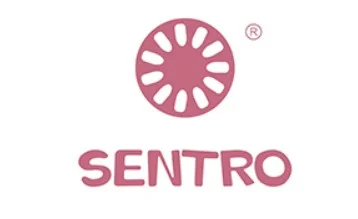The Significance of Weaving in Human History and Culture
Sep 25, 2023
Introduction
Weaving is a craft with deep historical roots, dating back to ancient times. Throughout history, weaving has played a pivotal role in human culture and daily life, serving various purposes that extend beyond mere practicality. This article explores the multifaceted significance of weaving, encompassing both its utilitarian and cultural dimensions.
I. Practical Applications of Weaving
Warmth and Protection
One of the earliest and most fundamental uses of weaving was for creating textiles to provide warmth and protection against the elements. Weaving allowed humans to fashion clothing, blankets, and hats that shielded them from harsh weather conditions, marking a crucial step in their survival and comfort.
Shelter and Structures
Weaving techniques have also been employed in construction, enabling the creation of housing and other structures. Woven fences, screens, roofs, and floors offered shelter, isolation, and stability, showcasing the versatility of weaving beyond textiles.
II. Cultural and Artistic Expression
Decoration and Cultural Identity
Title: The Art of Weaving: A Tapestry of Human Civilization
Introduction
Weaving, an ancient craft, has woven itself into the very fabric of human history and culture. Beyond its practical applications, weaving tells a story of innovation, tradition, and artistry. This article explores the profound significance of weaving through the lenses of history, culture, and creativity.
I. A Tapestry of Utility
1. Coziness and Protection
At its core, weaving is a practical endeavor. It emerged eons ago as humanity's response to the harshness of nature. By weaving fabrics into clothing, blankets, and hats, we discovered a way to shield ourselves from the elements, a pivotal development in our quest for survival and comfort.
2. Shelter and Infrastructure
Weaving techniques, however, transcend textiles. They've been integral in construction, shaping homes and other structures. Woven fences, screens, roofs, and floors have endowed us with not just shelter, but also separation and stability, redefining the very architecture of our lives.
II. Weaving's Cultural Symphony
1. Adornment and Cultural Expression
But weaving is more than a practicality; it's a canvas for artistic expression. Artisans have used weaving to craft tapestries, carpets, garments, and jewelry, each piece a vessel of culture and often religiosity. These artifacts, both functional and artistic, are mirrors reflecting a society's identity and heritage.
2. The Loom of Trade and Economy
Weaving has knitted itself into the economic tapestry of numerous societies. Textiles and woven goods have long been valuable commodities, powering trade and commerce on local and global scales, enriching economies and livelihoods.
III. Weaving's Social Ballet
1. Social Interweaving and Community
Weaving often serves as a social glue, bringing people together in workshops or weaving circles. These gatherings are not just about passing down skills; they're about weaving bonds and a sense of belonging within a community.
2. Threads of Tradition and Legacy
Weaving is the thread that weaves the fabric of cultural traditions and heritage. Rituals, ceremonies, and festivals worldwide involve weaving or the exchange of woven items. These age-old practices are the loom upon which we preserve our heritage and bridge generations.
IV. The Poetry of Creation
1. The Weaving of Imagination
Weaving offers a unique avenue for creative expression. Through the selection of colors, textures, and patterns, individuals breathe life into their creations. This artistic freedom fosters innovation and personal expression, making each woven piece a canvas where imagination dances and emotions resonate.
Conclusion
In conclusion, weaving is an artistry that transcends utility, deeply ingrained in human history and culture. From protecting us against the elements to shaping our architecture and economies, weaving is a thread that weaves a rich tapestry of existence. Beyond its utilitarian roles, it is an artistic language, a communal dance, and a testament to our cultural roots. As we continue to weave the narratives of our lives, the craft of weaving remains an enduring and intricate pattern in the grand tapestry of human civilization.
